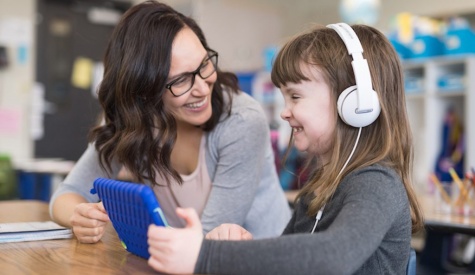
By Savannah Gresham | Writer
September 8, 2020
Fifteen days to flatten the curve. That is what Californians were told on March 13th, 2020. Though it seemed like a reasonable solution at the time, school is still being conducted remotely in most counties six months later. This new reality has set everyone involved in education catapulting into action to solve a problem that has never been solved.
Ask parents, teachers, and students of all ages how they like online learning–and prepare for a myriad of answers. The consensus seems to be that there are some expected difficulties, some not so expected difficulties, and some bright spots that have emerged out of the darkness cast by COVID-19.
The difficulties many could see coming are technical: Zoom glitches, internet problems, and slow Wi-Fi, along with all the distractions of being at home (like having access to comforts such as unlimited snacks, social media, and pets). Missing friends is also a widespread complaint. What hasn’t been as expected is how some students with learning disabilities have struggled with adapting to an entirely different structure of learning.
In California, there are around 795,000 students enrolled in special needs programs, according to Government Relations Director Kristen Power. In early April of 2020, Power wrote to California Governor Gavin Newsom, highlighting the essential nature of school-provided special needs services. She urged the Governor to take swift action to address children with special needs’ specific requirements during the COVID-19 shutdown. “Children with disabilities…uniquely rely on the public education…systems to ensure their emotional and educational well-being,” Power said in the letter, which was signed on behalf of a broad coalition of children’s advocacy groups and rights lawyers.
So far, special education students have been dealing with online learning on a spectrum. Kristina Hohmann, a special education teacher for Oceanside School District, claims that some of her students are actually doing better with the conveniences of home, while some with specific disabilities are struggling. “The kiddos are really missing the social aspect of school and the structure,” Hohmann said. Without the ability to walk around in between classes and get exercise and fresh air, focusing all day sitting online is painfully difficult for those with Attention Deficit Disorder. However, “parents have stepped up to the plate, getting more involved than ever before,” Hohmann said, in an all-out effort to help their children thrive.
Online learning has presented a call for adaptation that is undoubtedly unprecedented, summoning everyone to work together like never before. Despite great challenges, the collaboration is impressive. Some teachers are astounded at some of the remarkable benefits that have been a ray of sunlight in the darkness of quarantine. Ms. Loren Shrader, an English/Learning Strategies teacher at SCHS, has seen the upside. “This is a learning experiment that no one has ever done before, and the results are positive. We are all on this online learning adventure together. Every day, the students teach me something new and I teach them something new,” she said. “Online learning is innovative, something different, and learning for the Gen Z will benefit these students. They are preparing themselves for jobs that don’t even exist yet.”
Throughout history, as major world crises such as famine, war, and disease arise, so do the struggles and triumphs of the human spirit. Similar to those instances, students, teachers, and parents are coming together to meet the challenge head-on.

Leave a Reply